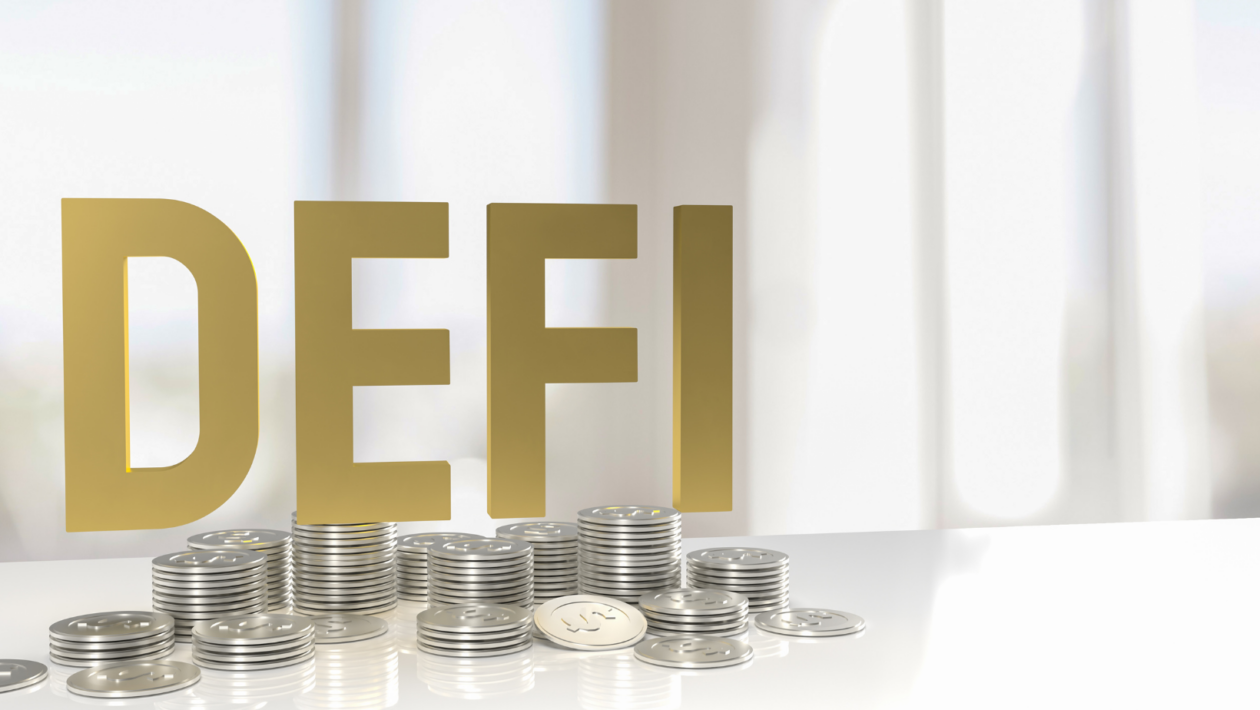In the military, a baptism by fire is the first time a soldier experiences battle. Ideas and innovations find fertile ground in a bull market when there is an abundance of capital and risk appetite. However, facing and surviving a “winter” is the real baptism by fire for any crypto project.
At its peak in December 2021, the total value locked (TVL) in decentralized finance protocols reached over US$250 billion, and at that time it represented 8.2% of crypto’s total market capitalization, which peaked at around US$3 trillion in November 2021. Since the crypto winter began, DeFi has lost about 75% of its total TVL, which currently stands at US$66.6 billion. This drop is in line with the decrease in total crypto market capitalization. However, DeFi’s relevance within crypto has remained stable, signaling it is not part of a temporary trend but rather one of the key pillars of the entire industry.
Considering DeFi is only a fraction of the overall crypto market today, DeFi has plenty of room to grow in the future, both on a relative and absolute basis. However, this is only true for DeFi projects that survive this baptism of fire. While it is too early to identify who will be the winners and the losers in the DeFi space, there are two characteristics that will help projects thrive in the next bull market cycle.
- Integration with licensed custodians
Investors will always be in control of their funds if their funds are kept with a licensed custodian, and the recent struggles several major centralized finance platforms are facing highlight the importance of asset segregation. In general, there are many kinds of assets linked with the functioning of a given DeFi protocol. Some of these are held on-chain by the protocol itself while others are distributed to investors in the form of tokens.
A DeFi protocol holding its assets and transacting via an integrated custodial solution is able to operate with a higher degree of security (for example, increasing protection against hacking), and more flexibility in terms of adapting to regulatory changes. In a highly regulated environment where asset security and compliance are of utmost importance, there is no doubt that DeFi will benefit from extending this approach to its infrastructure.
Considering DeFi protocols provide investors with tokens of economic value, it is likewise important these digital assets are stored securely. In practice, this has proven to be challenging for some projects. The DeFi space is expanding at an incredible speed, which means custodians must constantly upgrade their platforms in response to emerging trends and technologies. Custodial solutions that enable investors to seamlessly participate in the decentralized economy and easily deploy strategies through decentralized applications contribute to the economic value and safety in the DeFi space.
- Limits for whales
Whales are big, beautiful and fascinating, but they can also be dangerous. We can borrow the analogy of whales swimming in an aquarium to analyze whale activity in the crypto industry. In such a finite space, the movements of a large whale will likely damage the aquarium. The first minor cracks that slowly appear on the glass will quickly spread in a lightning pattern across the walls of the tank. Soon enough, the structural integrity of the aquarium is no longer strong enough to contain the water, which will cause the tank to collapse under its own weight.
DeFi protocols are in fact nothing more than a structure with varying degrees of complexity, such as liquidity pools that are governed by a set of rules. Liquidity pools, similar to the water tanks of an aquarium, are of finite dimension so whales are forced to “swim” in a limited space. Transposing the image of the cracked aquarium to DeFi, we can easily see how a crypto whale too large for the pool it is in can be dangerous.
For example, if a crypto whale providing US$1,000,000 to a decentralized exchange pair liquidity pool of US$1,500,000 decides to exit, this can result in significant damage to other investors. They will experience a sudden collapse in liquidity and face a potential impermanent loss. The more imbalanced the pool, the greater the potential impermanent loss.
DeFi protocols that want to protect their ecosystem by growing a stable and diversified investor base will benefit by setting limits on whales’ participation and/or volume per transaction. This may slow protocol growth in the beginning, but sustainable growth in TVL will be associated with a higher degree of resiliency and economic strength. In contrast, a protocol with a large TVL comprised of a few whales might look like a successful protocol at first, until suddenly the first cracks appear when a large whale makes a move and tries to exit the pool.
Stress tests reveal the best
This crypto winter has already highlighted the risks that DeFi faces. Concepts are being significantly stress-tested, and there will likely be a large amount of consolidations in the sector. Currently, there are more than 1,750 DeFi projects, and TVL is the only way to measure who is leading and who is struggling.
MakerDAO, Lido, AAVE, Uniswap and Curve are the current top five protocols with a combined US$34 billion in TVL that account for almost 40% of the whole DeFi market. They are leading the pack at the moment, but it would be premature to say they will still be the leaders after this crypto winter.
Projects such as Arrakis Finance (built on Ethereum, Optimism and Polygon) are gaining market share and climbing the ranks, while other projects that looked promising but had underlying problems have already burned up, along with the blockchain they were built upon. Regardless of which protocols come out on top when the crypto market regains momentum, it is clear that the DeFi sector is already proving itself during this baptism of fire.
Not only has institutional appetite for participating in the decentralized economy remained at a steady level, but the sector is also experiencing increasing interest from traditional finance players that see the shift to blockchain-driven solutions as a long-lasting trend that can generate significant alpha in the future. Regulatory blessing will be the real turning point for mass adoption, and places like Dubai that embrace change are already experiencing a significant inflow of talents, capital and resources with a boost to their local economies and relevance in the global financial markets.
DeFi will likely emerge as one of the winners of this crypto winter as all the lessons learned so far are only making the sector stronger and a potential candidate to be the leader of the next bull run.





